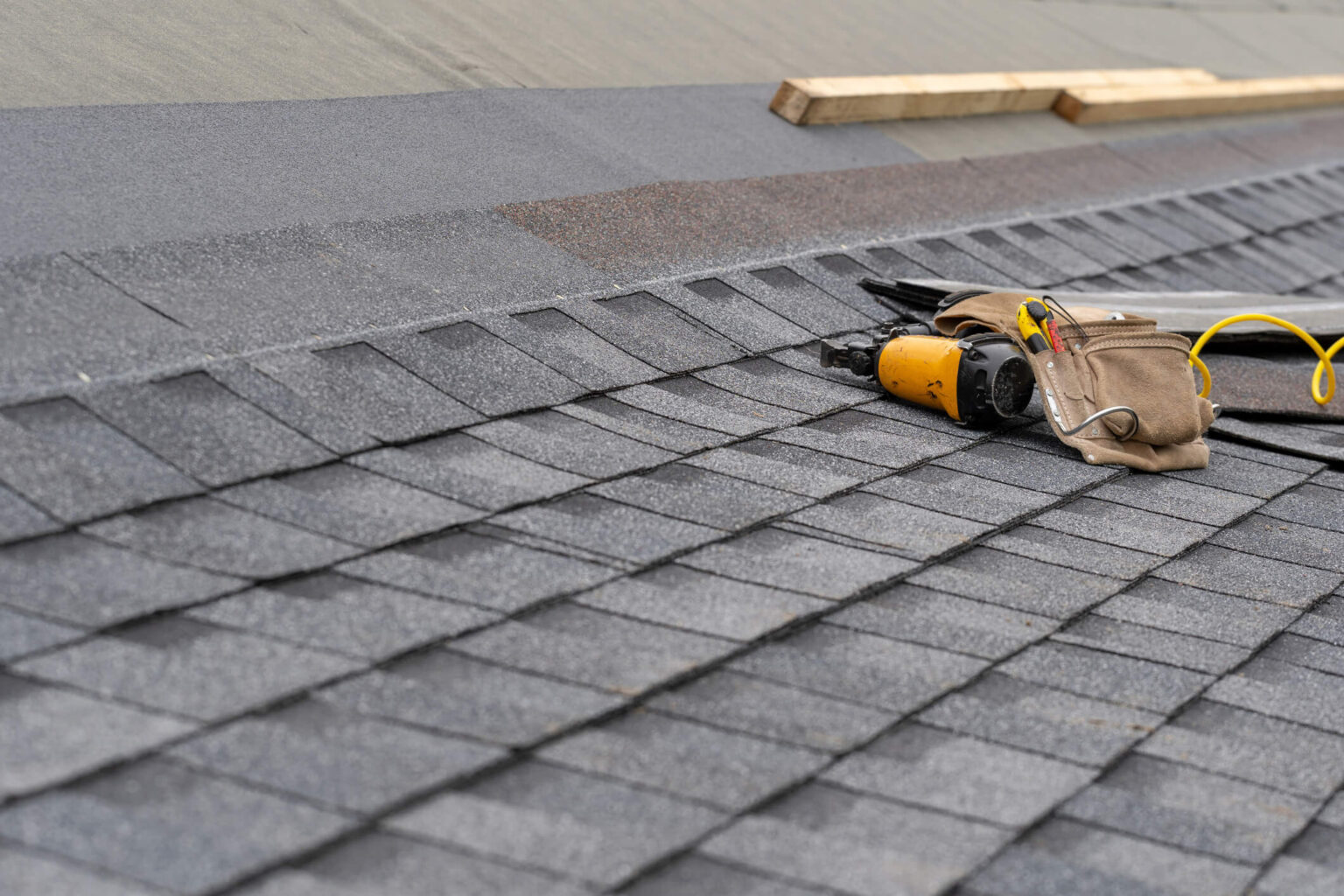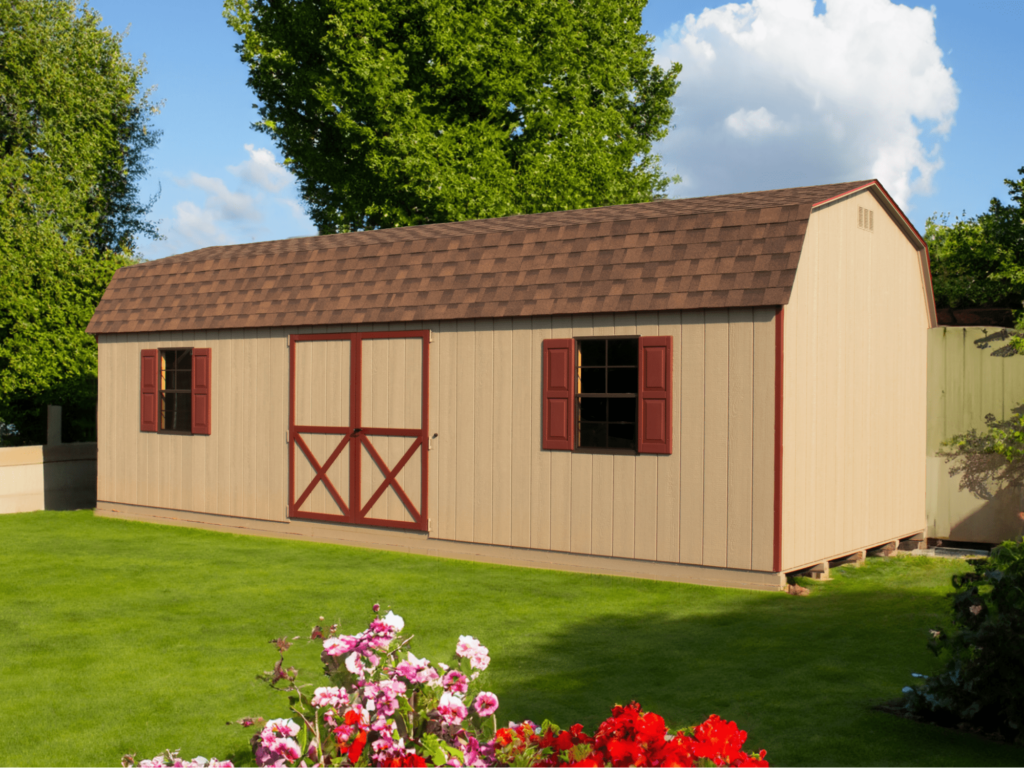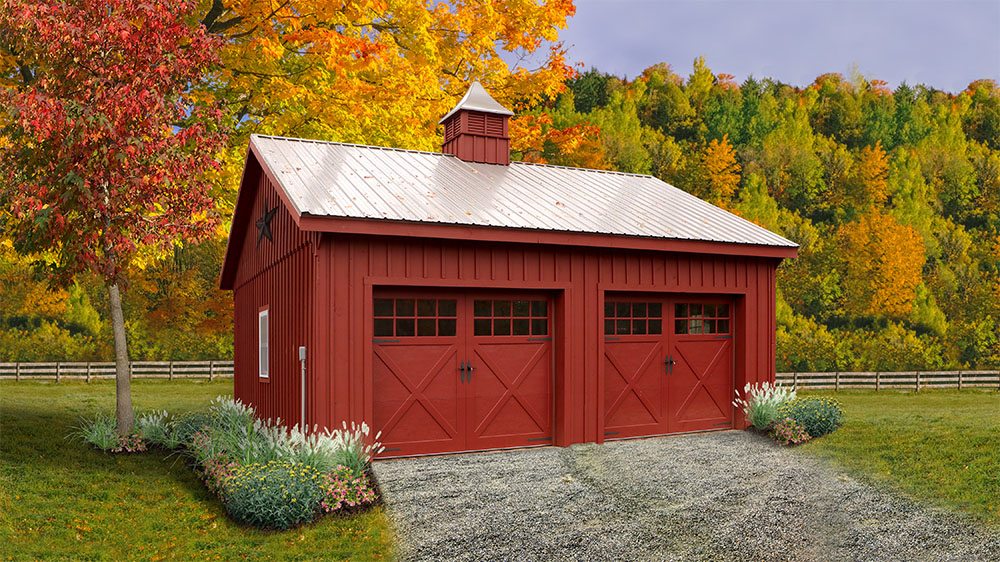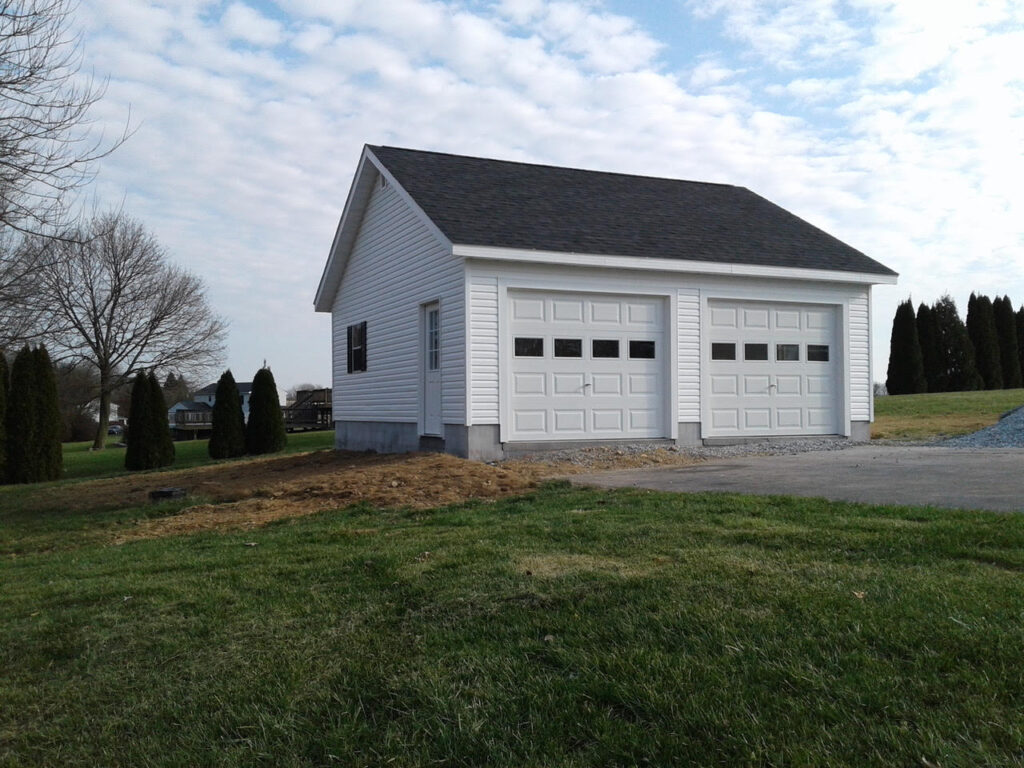
As you start to shop for a new outdoor structure, you’ll likely come across little details that need to be decided. What type of siding is best? What color trim will you have for your windows? And even, what type of roofing should I choose?
All these decisions can become overwhelming. In this blog, we’ll dive into the details of architectural shingles vs. 3-tab shingles and which is better for your next outdoor structure. That way, you can feel confident you’re making the right financial and visual decision.
What Are Each Type Made Of?
Let’s start our comparison with each material type. A significant difference between the two shingles is the quality of the materials. In short, you’ll find that architectural shingles are of a higher quality than 3-tab shingles.
3-Tab Shingles
These shingles used to be the standard for roofing but are now less likely to be used by home builders. This is because the lower cost of 3-tab shingles is often outweighed by their disadvantages.
3-tab shingles are made out of asphalt and adhesives with a fiberglass backing. They are relatively thin and measure about 3/16 of an inch. When they are installed, they are doubled up to create better durability, making them about 6/16 of an inch thick.
Since the shingles are all the same dimension and depth, you’re going to get a very flat-looking roof. Because of this, these shingles are more prone to blowing away from strong winds or buckling over time.
Architectural Shingles
On the other hand, architectural shingles are growing in demand and are quickly becoming the standard material for many new home builders. Unlike 3-tab shingles, they are most recognized for having a multi-dimensional design.
Another reason for their increased popularity is architectural shingles are made with heavier fiberglass, ceramic-coated granules, and water-resistant asphalt. With these enhancements, the cost of architectural shingles is higher, but ultimately more durable and aesthetically pleasing.
The heightened durability of architectural shingles means that you are less likely to require costly maintenance repairs or replacements down the road. On average, this type of shingle can last anywhere from 20 to 30 years if it is well-maintained.
How do Costs Differ?
When you start shopping between the different types of shingles, you’re going to notice a bit of a cost difference. The cost of 3-tab shingles is less than the cost of architectural shingles, but again, you’re going to get what you pay for.
Architectural shingles are more durable and less susceptible to warping, peeling, or buckling. They are also more resistant to intense weather and strong winds. With 3-tab shingles, you may find yourself having to make repairs or replacements after severe storms.

Pros and Cons of Each Shingle
For each type of shingle, there are advantages and disadvantages. Below, we’ll list out each so you can have a better apples-to-apples comparison.
Pros and Cons of 3-tab Shingles
Pros:
- Cost less than architectural shingle options.
- Can withstand wind speeds up to 60 mph.
- Carry a 15- to 20-year warranty.
Cons:
- Flat layer shingles that are thinner and weigh less.
- More prone to blowing away, curbing, or buckling.
- Need to be replaced more often — lasts an average of 12 – 15 years.
Pros and Cons of Architectural Shingles
Pros:
- The dimensional design adds more visual appeal.
- Designed with a thicker, sturdier mat, finer quality asphalt, and stronger adhesive.
- The extra weight provides more strength against wind lift.
- Rated to resist higher wind speeds — up to 130 mph.
- More color options are available.
- Carry a longer warranty — 20 – 50 years.
Cons:
- Have a higher upfront cost.
- Since they are heavier, some structures may require additional installation support to hold this type of roof.

Metal Roofing Options
Another roofing option that we haven’t mentioned, but is offered and popular, is a metal roof. This style of roof is going to provide an entirely different look compared to both architectural and 3-tab shingles.
Metal roofing is the most expensive option, but also lasts the longest compared to architectural or 3-tab shingles.
At Penn Dutch Structures, we offer standing seam metal roofing for all of our products. Panels of standing seam metal roofing feature a raised seam that rises above the initial level of the roof. This also creates texture and dimension for your roof.
Another style of metal roofing is ribbed metal roofing. The panels are ribbed or corrugated, with wavy U-shaped curves. The main difference between ribbed metal and standing seam metal panels is the position of the fasteners.
They are exposed on ribbed panels and hidden on standing seam panels. This means a ribbed metal roof may require additional maintenance. They are, however, a less expensive roofing option when compared to other metal options.
There are other advantages to metal roofing, including:
- Fasteners are not exposed to UV, moisture, and weather elements. Ultimately this means there is less wear exposure, less water damage, and a cleaner appearance.
- Proven to withstand extreme weather.
- Panels expand and contract better in hot and cold temperatures — there is less chance of waving or rippling of the metal.
- Cleaning and maintaining your metal roof requires low maintenance. We recommend cleaning your roof every so often to clear debris and dirt from the top. You can use a simple water and detergent solution.
Choosing Styles & Colors of Roofs with Architectural Shingles
Roof styles are more than just for your home, you can also choose different styles and architectural shingle colors for your shed, garage, horse barn, log cabin, or gazebo. At Penn Dutch Structures, you can customize your structure to match the rest of your home’s aesthetic.
Here are some factors to take in as you are deciding what architectural shingles color to choose. Consider your home’s style, the color of your structure’s siding, and the location of your outdoor structure.
For example, a black, or darker color roof will attract heat. So, if your shed is sitting in the sun all day, the things within the shed may get more heat and rise in temperature with a darker roof.
Another factor we mentioned above is your home’s style. What design elements are incorporated into your home that you would want to continue to use in your outdoor landscape? Are there specific colors that should be used on your exterior structures?
Ultimately, you’ll have more vibrant color options with metal roofing, but shingles can give you a neutral and earthy tone to match your landscaping. Our team can help provide insight on what shingle color will look best with the rest of your structural elements, such as trim, siding, and any door colors.
The shape of the physical shingle will be the same, but you can get various outdoor structures that come in different shapes that complement the existing style and lines of your home.
By adding customizations and personal touches to your outdoor structure, with even the smallest details such as architectural shingles, you will boost your home’s curb appeal and contribute to an aesthetically pleasing landscape.
Get The Best Value
Knowing the difference between architectural shingles vs. 3-tab shingles is essential. Looking for an exterior upgrade? Browse all of Penn Dutch Structures’ backyard structures.

This blog was originally published on January 29th, 2019, and was updated on September 21st, 2023.
